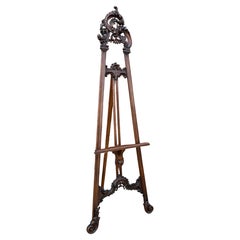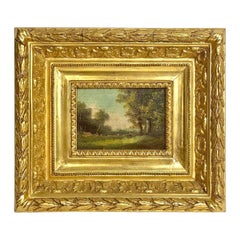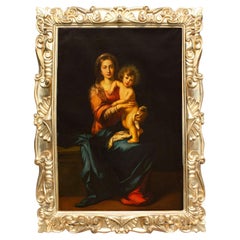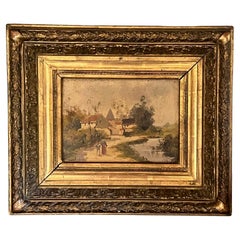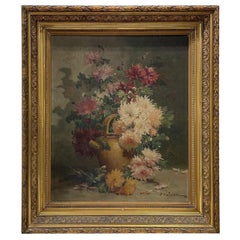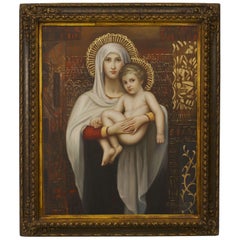Hand-Carved Paintings
Early 20th Century Italian Rococo Revival Hand-Carved Paintings
Wood
Late 19th Century French Antique Hand-Carved Paintings
Giltwood, Paint
1910s Italian Baroque Vintage Hand-Carved Paintings
Canvas, Giltwood
Mid-19th Century French French Provincial Antique Hand-Carved Paintings
Wood, Paint
Late 19th Century French Antique Hand-Carved Paintings
Canvas, Giltwood
20th Century Italian Renaissance Hand-Carved Paintings
Paint
1910s Italian Baroque Vintage Hand-Carved Paintings
Canvas, Giltwood
19th Century German Biedermeier Antique Hand-Carved Paintings
Canvas, Hardwood, Paint
Late 19th Century English Victorian Antique Hand-Carved Paintings
Wood, Giltwood, Paint
19th Century German Biedermeier Antique Hand-Carved Paintings
Canvas, Paint, Hardwood
1890s Italian Gothic Revival Antique Hand-Carved Paintings
Oak, Paint, Wood
1840s American American Empire Antique Hand-Carved Paintings
Gesso, Canvas, Wood, Giltwood, Paint
Late 19th Century Swiss Antique Hand-Carved Paintings
Canvas, Wood, Giltwood, Paint
19th Century European Antique Hand-Carved Paintings
Wood, Giltwood, Paint, Paper
17th Century Peruvian Antique Hand-Carved Paintings
Wood, Paint, Giltwood
17th Century Italian Baroque Antique Hand-Carved Paintings
Gold Leaf
Mid-20th Century American Hand-Carved Paintings
Canvas, Giltwood
Early 19th Century Chinese Chinese Export Antique Hand-Carved Paintings
Glass, Wood, Giltwood, Lacquer, Paint
Mid-19th Century Italian Neoclassical Antique Hand-Carved Paintings
Wood
19th Century German Biedermeier Antique Hand-Carved Paintings
Giltwood, Paint
Early 20th Century Dutch Hand-Carved Paintings
Wood, Giltwood
17th Century French Baroque Antique Hand-Carved Paintings
Canvas, Giltwood
Early 19th Century European Gothic Revival Antique Hand-Carved Paintings
Iron, Zinc
1920s French Aesthetic Movement Vintage Hand-Carved Paintings
Canvas, Giltwood
Late 19th Century Italian Baroque Antique Hand-Carved Paintings
Canvas, Giltwood
Mid-19th Century French Antique Hand-Carved Paintings
Canvas, Giltwood
Late 19th Century French Louis XV Antique Hand-Carved Paintings
Wood, Giltwood
19th Century Dutch Romantic Antique Hand-Carved Paintings
Canvas, Giltwood, Paint
1880s Italian Louis XVI Antique Hand-Carved Paintings
Canvas, Wood
Mid-17th Century European Baroque Antique Hand-Carved Paintings
Canvas, Giltwood
Early 19th Century Early Victorian Antique Hand-Carved Paintings
Mahogany, Paint
19th Century European Antique Hand-Carved Paintings
Canvas, Wood, Giltwood, Paint
Early 19th Century Italian Empire Antique Hand-Carved Paintings
Canvas, Wood, Paint
1750s French Rococo Antique Hand-Carved Paintings
Canvas, Wood, Paint
Late 19th Century French Antique Hand-Carved Paintings
Canvas, Giltwood
19th Century French Napoleon III Antique Hand-Carved Paintings
Giltwood, Paint
Mid-19th Century Italian Antique Hand-Carved Paintings
Canvas, Wood, Paint
Late 19th Century Italian Rococo Revival Antique Hand-Carved Paintings
Porcelain, Wood
1890s Italian Gothic Revival Antique Hand-Carved Paintings
Copper
Early 20th Century Austrian Hand-Carved Paintings
Canvas, Giltwood, Wood, Paint
18th Century French Antique Hand-Carved Paintings
Canvas, Wood, Paint
Late 18th Century Italian Neoclassical Antique Hand-Carved Paintings
Wood, Paint
Early 20th Century German Greco Roman Hand-Carved Paintings
Canvas, Giltwood
1890s Unknown Late Victorian Antique Hand-Carved Paintings
Paint, Plaster, Giltwood
Late 19th Century Austrian Belle Époque Antique Hand-Carved Paintings
Canvas, Giltwood
Late 19th Century American Victorian Antique Hand-Carved Paintings
Paint
Early 1900s French Belle Époque Antique Hand-Carved Paintings
Glass, Giltwood, Paper
Late 18th Century Italian Rococo Antique Hand-Carved Paintings
Canvas, Giltwood
Mid-20th Century French Mid-Century Modern Hand-Carved Paintings
Canvas, Wood, Paint
18th Century Japanese Edo Antique Hand-Carved Paintings
Metal, Iron
18th Century French Antique Hand-Carved Paintings
Canvas, Wood, Giltwood
Late 20th Century French Mid-Century Modern Hand-Carved Paintings
Wood, Paint
17th Century Italian Baroque Antique Hand-Carved Paintings
Canvas, Giltwood
19th Century French Antique Hand-Carved Paintings
Canvas, Wood, Giltwood, Paint
Late 20th Century French Mid-Century Modern Hand-Carved Paintings
Canvas, Wood, Paint
Late 20th Century French Mid-Century Modern Hand-Carved Paintings
Canvas, Wood, Paint
1770s American American Colonial Antique Hand-Carved Paintings
Gold Leaf
19th Century Belgian Antique Hand-Carved Paintings
Canvas, Plaster, Wood, Giltwood
Mid-20th Century French Mid-Century Modern Hand-Carved Paintings
Canvas, Wood, Paint
Mid-20th Century French Mid-Century Modern Hand-Carved Paintings
Canvas, Wood, Paint
